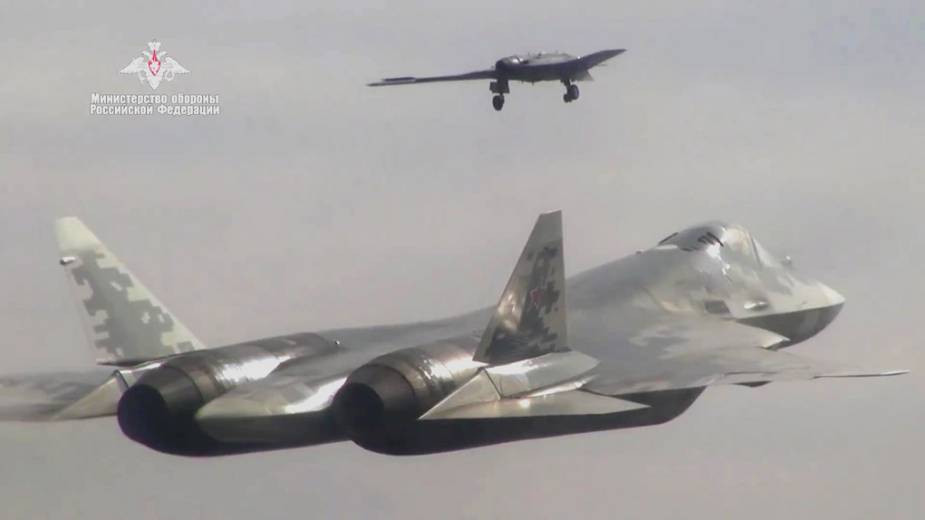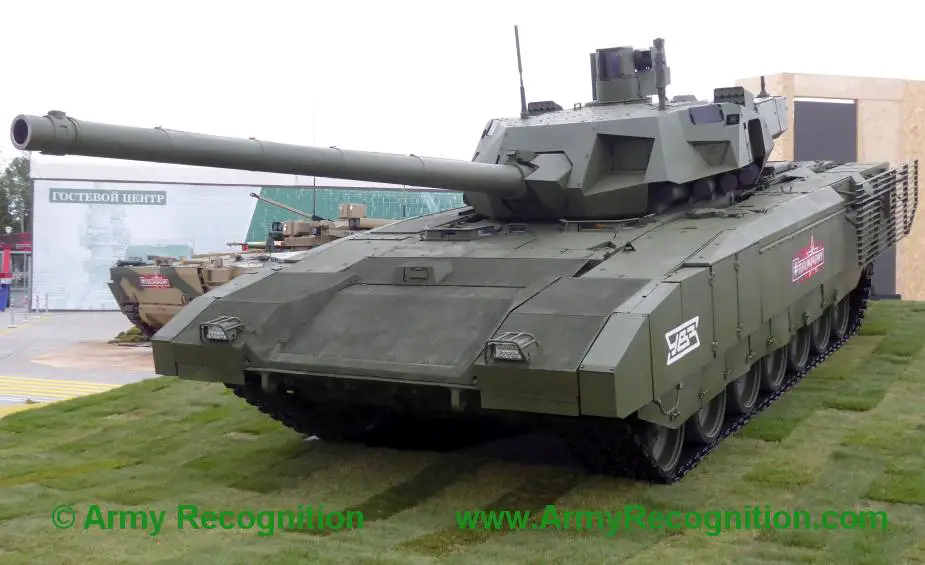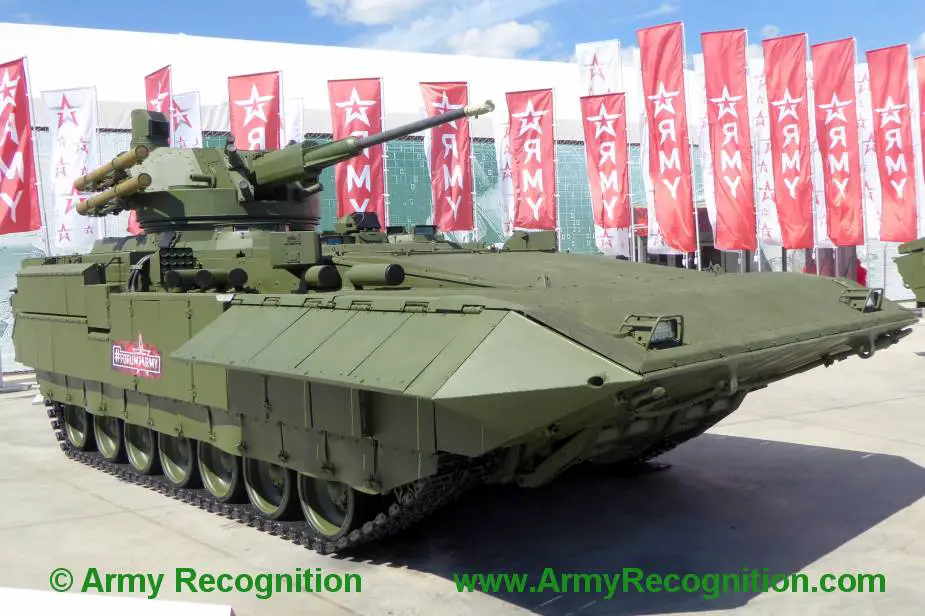Russian arms program for 2024-2033 to cost 21-22 trillion rubles - Part 2
The Russian state arms program for 2024-2033 will not be cut. At least 21 or 22 trillion rubles will be allocated. The appropriations are comparable to previous arms programs. First Deputy Chair of the Military-Industrial Commission Andrey Yelchaninov told the Rossiyskaya Gazeta daily about the work on the program.
Follow Army Recognition on Google News at this link

Su-57 fighter jet and S-70 heavy drones can interact. The pilot of the jet can control the drone (Picture source: Russian MoD)
Russian aircraft makers have produced another advanced design, which is Okhotnik S-70 heavy drone. The best Sukhoi Su-57 solutions are used in the design, in particular, Su-57 artificial intelligence. The fighter jets and drones can interact with each other and in various combat orders. The pilot of the jet can control the drone. In the near future, Su-57 will be able to control several Okhotnik drones and distribute targets among them.
Group engagement of jets and drones will be arranged in the near future. Okhotnik will be able to attack air and ground targets under the control of the manned aircraft. Experts believe the interaction will increase the combat potential of the Russian Aerospace Forces. Okhotnik is to be supplied in 2024. “Unmanned vehicles are a key guideline in the development of the aircraft industry. We have our own solutions and products, which are being tested. Some of them will be demonstrated this year at MAKS airshow and Army forum,” Yelchaninov said.
Some Russian private companies have created good light drones. Russian law enforcers have displayed interest in them. As for the normative base, all the problems have to be eliminated in 2021-2022 to allow drones to fly in the Russian airspace.
The concept of the Prospective Airborne Complex of Military-Transport Aviation (PAK VTA) will be finalized in 2021. The airlifter will be included in the next arms program. UAC design bureaus and enterprises are experienced in airlifter construction and have a major potential to build super heavy aircraft. The industry is capable of designing and producing a super heavy airlifter.
In 2022, the first vehicles on Armata platform will be delivered to the army for test operation, which is to determine their engagement forms and eliminate potential drawbacks. The Defense Ministry will decide on the number of procured vehicles by the results of the test operation. It will be reflected in the new arms program.
As the arms procurement order is to trim by 2030, the transition of the defense industry to civilian output becomes a major economic development. In 2020, the share of civilian products comprised 25.1 percent against the target figure of 17 percent. Despite the general economic slowdown, civilian output increased the income of defense enterprises in 2020 by nearly 100 billion rubles — from 904 to one trillion rubles.

Armara T-14 (Picture source: Army Recognition)

Armata T-15 (Picture source: Army Recognition)
© Copyright 2021 TASS / Army Recognition Group SPRL. All rights reserved. This material may not be published, broadcast, rewritten nor redistributed.


























